How to set up a successful supperclub
All my tips and tricks, mistakes to avoid and lessons learned from my supperclub days
Hello, and welcome to Newsletter No 33 here on Substack! Thank you for stopping by. If you are already subscribed - THANK YOU! Seeing hundreds of you read my newsletter each week means the world to me! And if you are not yet a subscriber, hit the link below if you are interested in recipes as well as tips and tricks to make the most of our increasingly eclectic pantries and a good dose of my at times random musings about all things food!
❤️ Did you know that if you hit the HEART at the top or bottom of this post, it makes it easier for people to find this newsletter? (And also puts huge smile on my face!)
When I tell people I used to run a Supperclub with my friend Kaja (now of Krümel, Stockholm fame - if you haven’t ordered her cookie cookbook (cookiebook?) yet, you definitely should!), the question I get asked the most is “how”. How did we start our Supperclub? How did we run a Supperclub alongside full-time jobs? How did we find our (paying!) guests. etc. etc. etc. So for this week’s newsletter I thought I would share what my partner in crime, Kaja, and I learned from hosting various supperclubs, cooking classes and one-off events like catering the 40th birthday party of a famous Brussels journalist or a pop-up event in a local wine bar.
First things first, you might want to go and get yourself a coffee and make sure you sit somewhere comfortable - today’s newsletter is a long one!
If you have been toying with the idea of hosting a supperclub, the key piece of advice I can give you is to just do it. Kaja and I had incredible fun organizing these events – it’s a great way to make the most of your passion for food and a fun way to meet new people (including other foodies). Plus, having strangers pay to eat your food will also give you a huge sense of accomplishment and pride. And, as an unexpected benefit, you may also find your cooking skills improve dramatically (at least Kaja and I have found that to be the case). Just don’t do what I did and start your supperclub journey at the same time as buying and moving into a new apartment, interviewing for a new job and starting a new relationship ;-).
If you want to host a supperclub the first thing you need to think about is what kind of supperclub you want to organize. That will in part depend on the size of your apartment/the location where you will be hosting the event, the type of food you want to serve and whether you will be doing this on your own or will have the help of a friend or partner.
Food
Food is clearly the most important element when it comes to supperclubs. Unless you are professionally trained (or a serious amateur chef), my advice would be to cook the food you like to eat. After all, half the fun of playing ‘restaurant’ in your own home is deciding what gets put on the menu!
You should also make sure that your menu reflects what you are comfortable making (which will go miles towards reducing stress on the big day) and what is feasible given the size of your kitchen, stove, oven etc. It goes without saying that some dishes that are perfectly doable for a small dinner party become a lot more challenging to pull off in most home kitchens when prepared for 12(+) people. Kaja and I learned the hard way that roasting whole trouts for 10 or more people in a single oven is pretty challenging. Also, in case you want to include more challenging and/or new to you dishes, make sure you test them at least once or twice before the big day.
When coming up with menu ideas it helps to have a theme – e.g. seasonal, vegan, vegetarian, nose to tail, regional, cookbook focused etc. Ideally opt for something that seems somewhat unique in your area to help you stand out and give people a reason to come. This will also ensure there is some thread connecting each dish on the menu.
You might also try and come up with some sort of signature item, it could be as simple as offering a shot glass of sorbet between the main course and dessert, with the flavour of the sorbet adjusted for each event. For us, it was serving homemade sourdough bread and a compound butter (the flavour of which always matched the theme of each dinner). Again, this helps to make your supperclubs a bit unique and gives each of your supperclub events a common element.
How many courses you serve is entirely up to you. We found 4 courses plus a small snack served alongside a welcome cocktail to be the perfect size. It gave us the chance to play around with lots of different dishes and also made us feel like we were offering good value for money to our guests (and made sure no one would leave hungry!).
Drinks
How you approach drinks for your supperclubs is again entirely up to you. You could make it ‘bring your own’, you could include a single glass of wine or do what we did and include a welcome cocktail, all wine plus water, tea and coffee.
A welcome cocktail is by no means necessary but we found it a nice way to start the evening. Also, making this a little unusual can be an excellent ice breaker in giving your guests something to talk about. And it does not need to be complicated or expensive. For us, we typically served some sort of sparkling wine cocktail. E.g. for one of our events we made Kir Royal, but with a homemade hibiscus syrup instead of cassis liqueur for an unusual twist.
If you do decide to offer wine, what wine you will serve will again depend on the type of event you are organizing. As much as we enjoy drinking wine, neither Kaja nor myself are wine experts – our strength is firmly in the food department. So we decided early on that we would try and find wines that would likely to appeal to everyone and that would go well with the menu rather than engage in a more rigorous exercise of trying to match different wines to each course on the menu.
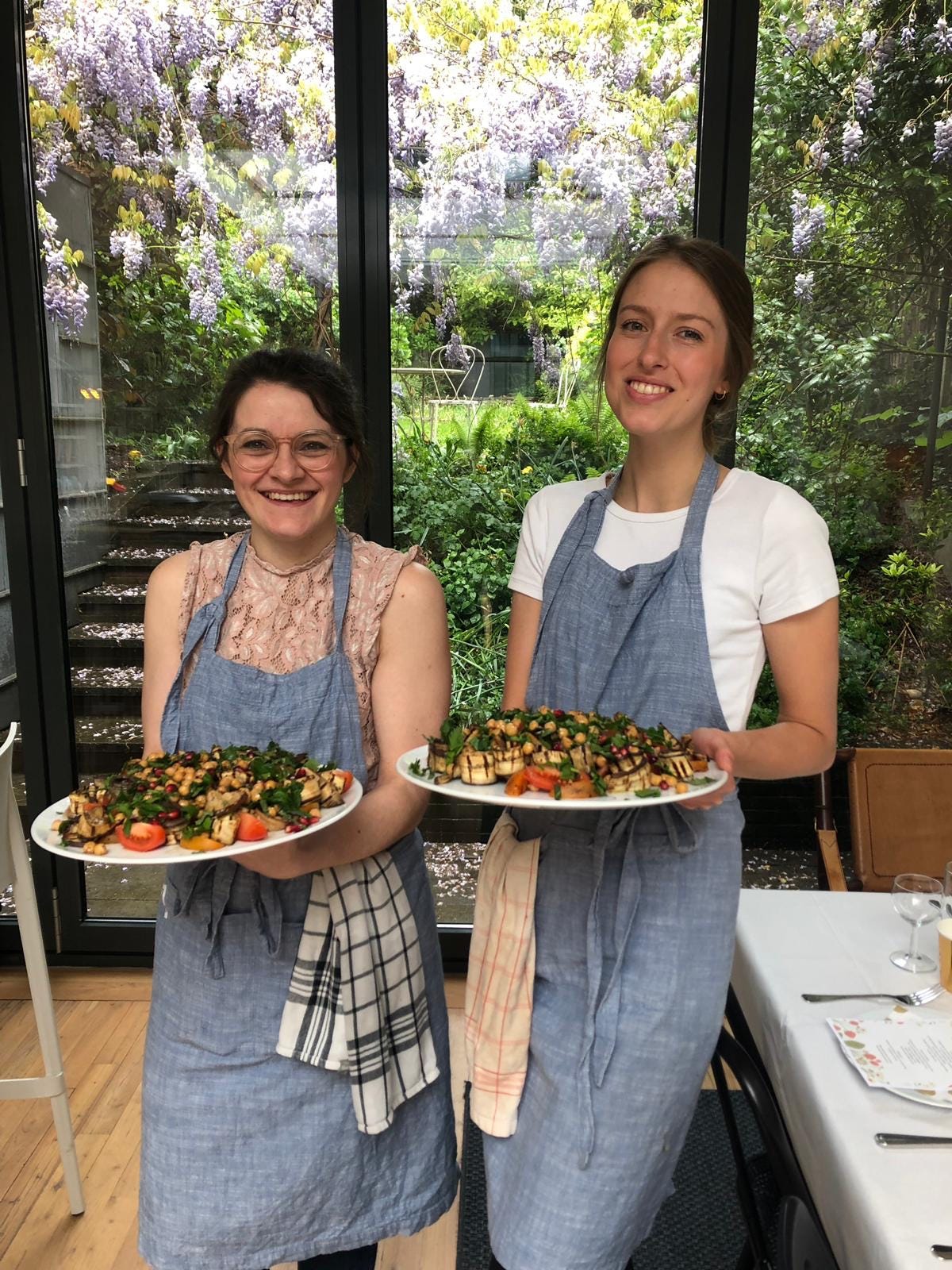
Crockery & Cutlery
This is an obvious element in hosting supperclubs but a surprisingly easy one to overlook. Before the big day, make sure that you have enough plates and cutlery for all your guests, ideally for each course you are serving so you don’t have to do any dishes in between courses. The same goes for wine glasses and water glasses, serving platters and serving spoons, bread baskets, water jugs etc. I am still grateful to my friend Camille who lent us some cutlery less than an hour before our guests for our first supperclub were due to arrive because we realized a little late we were short on cutlery!
Ideally you also have a few of each to spare – accidents happen and in case you (or one of your guests) accidentally break a plate or a glass or a fork drops on the floor you want to be able to replace these asap.
It is also a good idea to map out how you will serve each dish (will you do any sharing dishes or will each guest be served their own plate for each course?) before the big day so you know how to set the table and whether you have enough serving dishes etc. (and whether you will need to do the dishes/run the dishwasher at any point to have clean plates for later courses). We often went for a mix – e.g. main courses were often served on big sharing platters so our guests could help themselves to as much or little as they wanted and for desserts we typically plated these up in the kitchen.
Decoration
Matching tablecloths, candles and flowers go a long way towards creating a cosy atmosphere. And it doesn’t have to be expensive: we often arranged flowers bought in the supermarket in mason or old jam jars decorated with some string and used IKEA tealights in jam jars and water glasses which we placed on the window sills in my dining room.
Gift
If you can manage, a small take home gift is an excellent idea as well (think a small bag of homemade cookies, crackers, chutney, jam, a jar of pickles flavoured butter, homemade sourdough bread etc). E.g. for one of our events we did a Christmas cookie and mulled wine class and each student got a small bag of mulling spices to take home to replicate the mulled wine we had served during the class.
Music
You can obviously craft your own playlist (and maybe even link it to the theme of your supperclub). Alternatively, Spotify have plenty of lounge music type playlists that we found worked great for our events. Either way, having some nice music will help create a cozy atmosphere and will help your guests feel comfortable and have a good time.
Help!
Think carefully about whether you need any help on the day itself. Again, that will depend to a large extent on the size of your supperclub and how complicated the dishes are.
Our supperclubs were for 12 people. This is just about the size you could pull off by yourself but also a size where it really helped to be part of a team of two – so one of us could greet our guests while the other one continued cooking or refilling glasses, or one of us could clear the table while the other was getting the next course ready. For a lunch for 18 people, one of Kaja’s friends offered to help and that was a godsend – it made it so much faster to plate up the food (key so no one’s food went cold), serve it and clear the table before the next course.
Promotion
A supperclub is nothing without paying guests. We were lucky in having had a great response to Two Kitchen Brussels but that is no doubt thanks to promoting our events through a number of different channels. Both of us wrote about our supperclubs on our personal foodblogs. We also posted a lot on instagram – not just announcing the events and publishing the menu but also here and there when we were testing dishes for the supperclubs, small teasers of what our guests could expect on the big day etc.
So once you have decided on the big day, the format, at least an outline menu, what to do about alcohol and how much to charge, use whatever channels you have to promote your event: use your blog, instagram and twitter accounts, share it on facebook, tell your colleagues and friends about it (and tell them to tell their friends).
How frequently should I host my supperclubs?
This is entirely up to you. We started off by hosting one supperclub a month and then quickly realized that given the response rate and the work involved in planning a supperclub it made sense to host two supperclubs using the same menu. So then we organized two events each month. If you can pull it off, organizing the supperclubs as closely together as possible (e.g. a Friday and Saturday night on the same weekend) will also save you lots of time – it will half your shopping time and you can probably prep dishes for both events at the same time. That being said, if you have a busy day job, filling your weekend completely with food shopping, cooking and hosting large dinners is also surprisingly tiring and not always the best way to recharge your batteries as we learned!
Money
How much you charge is up to you but given the time and effort involved in planning a supperclub, the food shopping, food prep etc., it is only fair to ask for an amount from each guest that not only covers your ingredient costs (plus electricity, gas etc) but also compensates you for your time spent. This is also only fair to those individuals whose livelihood depends on organizing these types of events by not creating any false expectations of how much a supperclub should cost to attend.
To get a sense of how much to charge you can see what supperclubs similar to yours charge (and whether this includes alcohol or not).
To protect yourself I would suggest getting your guests to pay no later than 1 week prior to the event to reserve their spot. In case you have to cancel the event, you can always provide a refund. Otherwise, I suggest you make the tickets non-refundable so you are not out of pocket in case of last minute cancellations where you have already bought pricey ingredients and are unable to fill those spots.
And this is the lawyer in me, but I would recommend you also check what the tax position is on any money you make from the supperclub where you live so you don’t run into any nasty surprises at any point!
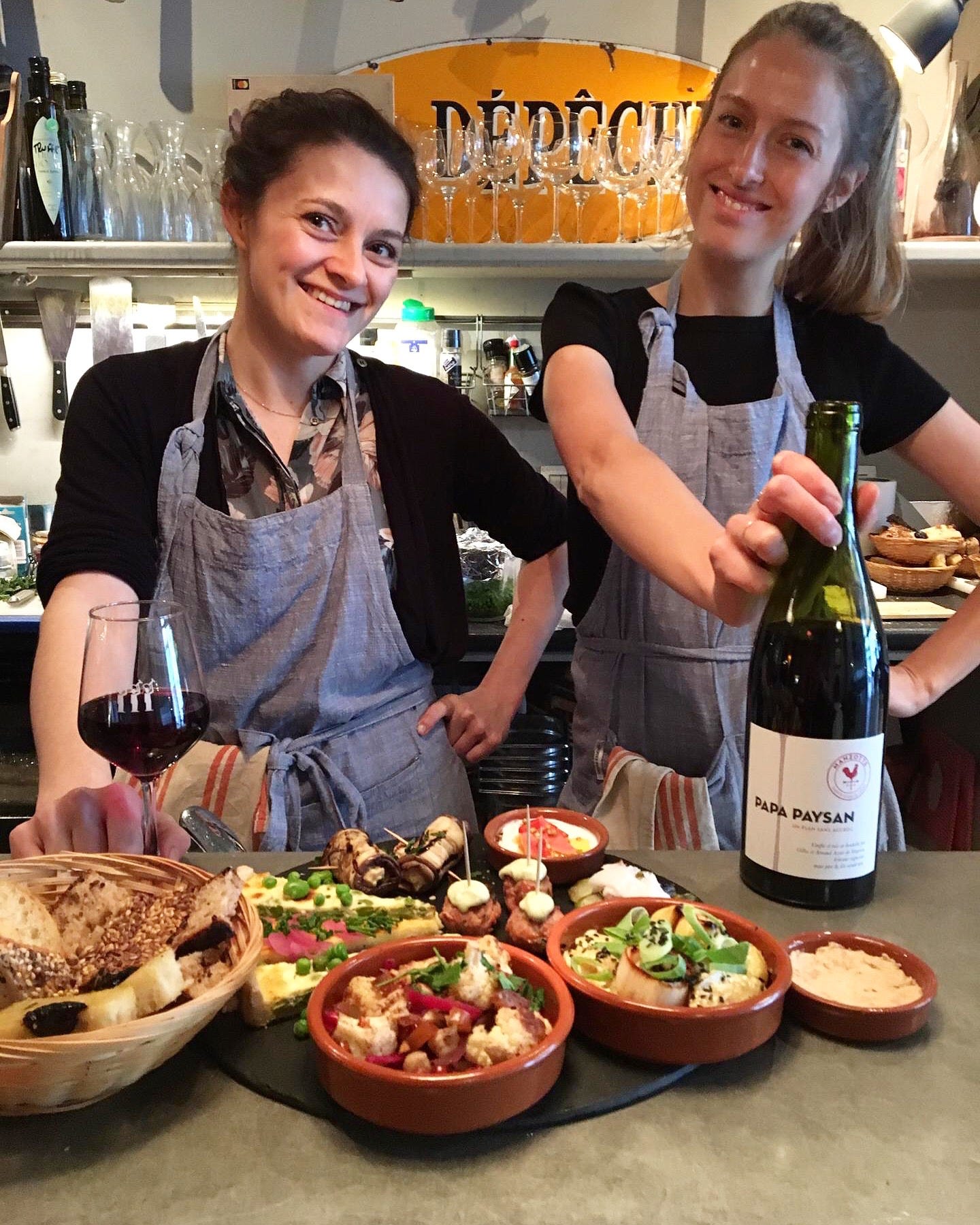
Lastly, don’t forget to have fun!
Organising and hosting supperclubs can be nerve-wrecking and tiring. You will probably spend several weeks planning each event, testing dishes, writing and rewriting the menu, promoting the event and dealing with bookings, promotion, buying (and schlepping home) heavy bags full of all kinds of delicious ingredients and running across town like a mad person to try and find the one key seasonal ingredient which seems to have disappeared from supermarket shelves and market stalls overnight (bear’s garlic I am looking at you!). And this is before you rearrange the furniture in your dining room to turn it into a makeshift restaurant for a night, spend hours on your feet prepping ingredients and then spend several hours trying to ensure your guests have a great time, they enjoy the food, their wine and water glasses are refilled on a regular basis and no guest leaves hungry. And then there is still all the dishwashing that needs to be taken care of. So the day after a supperclub you will be tired and exhausted. Your feet will likely hurt. And yet, you will be sad the day is over and you cannot wait to do it again.
And yet, if I am honest, those long hard days in the kitchen were often my favourite part of hosting supperclubs. Kaja and I would typically meet first thing in the morning at one of our favourite cafes for a much needed caffeine jolt before heading to the market at Flagey to stock up on ingredients. Back home in my kitchen, we would crank up the volume on some old school classics and get to work (with the odd break to dance across the kitchen floor while playing air guitar on a cucumber).
An unexpected and amazing side effect of hosting supperclubs was meeting all the many wonderful people who showed up to our events. Those who came to several events (if that isn’t a compliment then I don’t know what is); guests who showed up as strangers but left as friends like my friends Ana and Ula; guests I was able to connect with other friends of mine like my friend Elisabeth who I was able to put in touch with an author (and fellow Dutchie) she admired when said author came to one of our events; guests who told their friends and colleagues about us resulting in us catering the lunch for a famous journalists’s 40th birthday etc. etc. etc.
Do let me know if you have any other questions about what it takes to run a Supperclub!




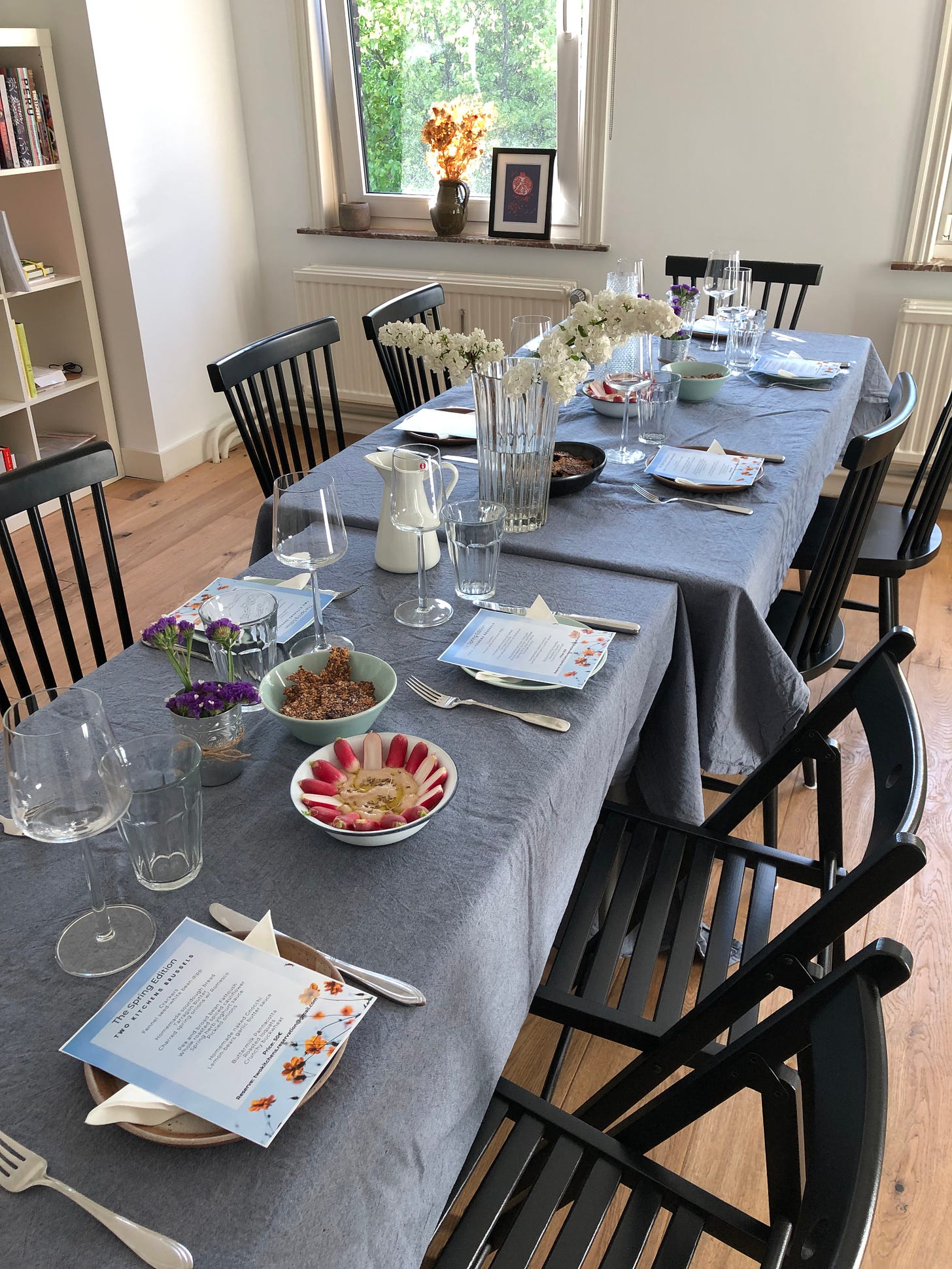
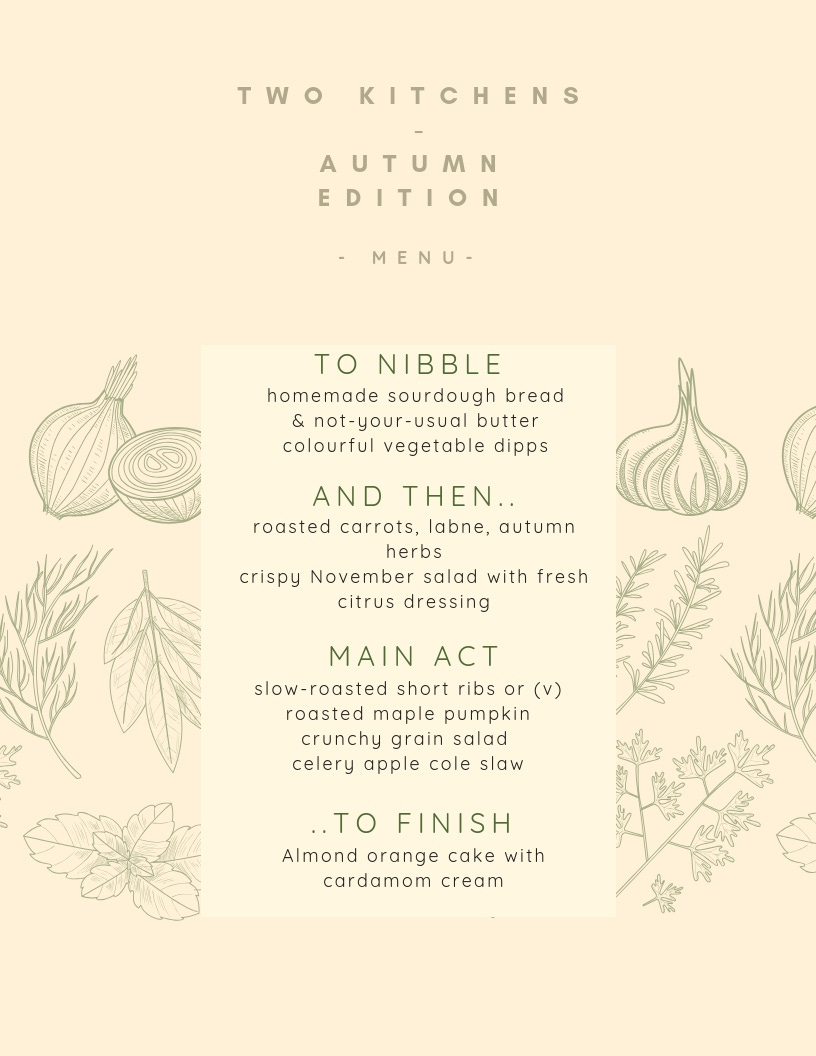
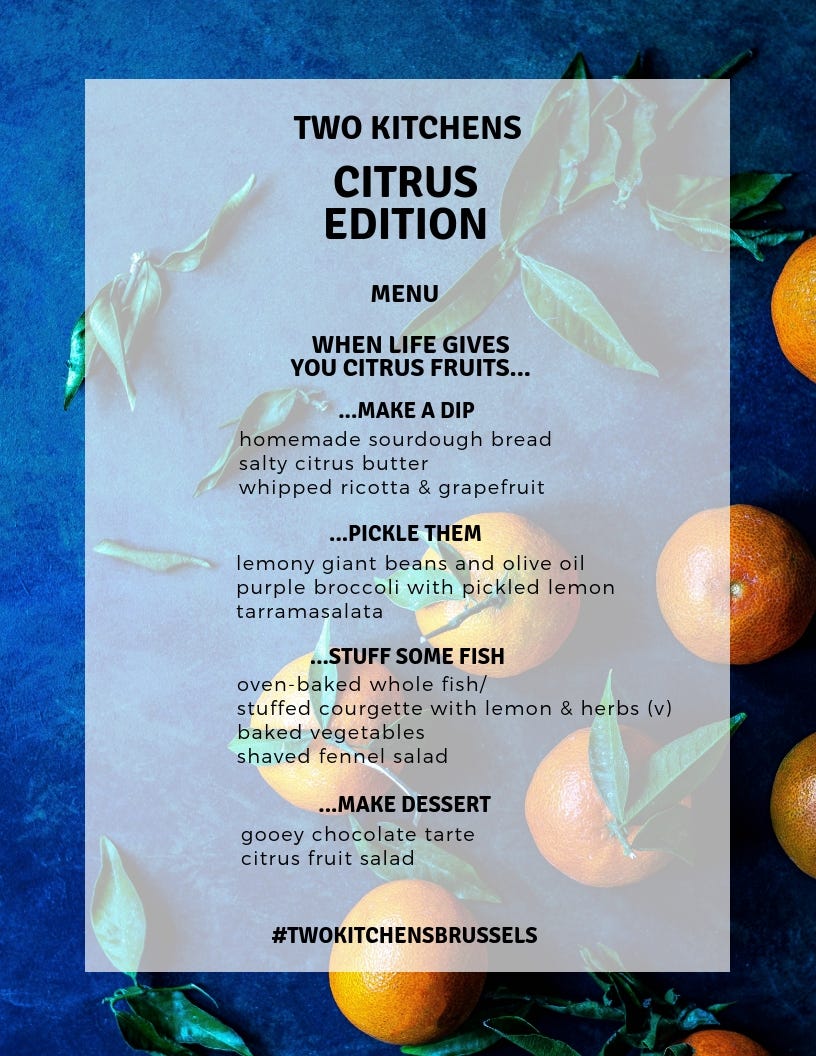
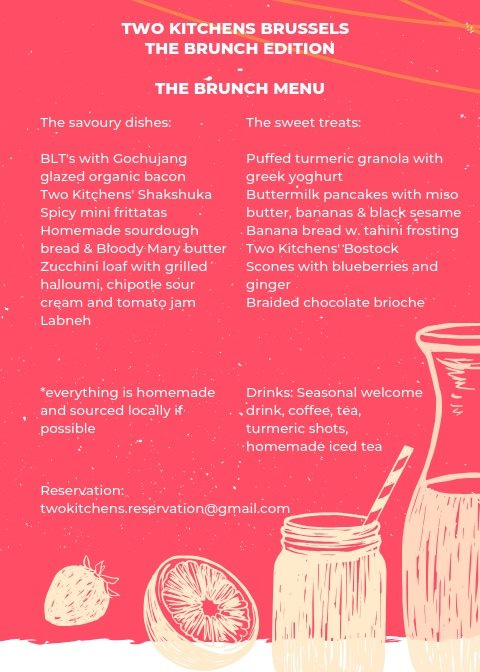
Wow Sofia! Such an interesting dive into a topic I really didn’t know much about! I loved seeing your gorgeous, enticing menus. I wish I could transport to that brunch on this sunny Sunday morning. Thank you for sharing ❤️
A good read! A macchiato was purchased in advance. A few friends run supperclubs. Some also have games or things on the table so the guests (who are usually strangers to each other) have something to talk about and break the ice. It also helps to buy time between courses.